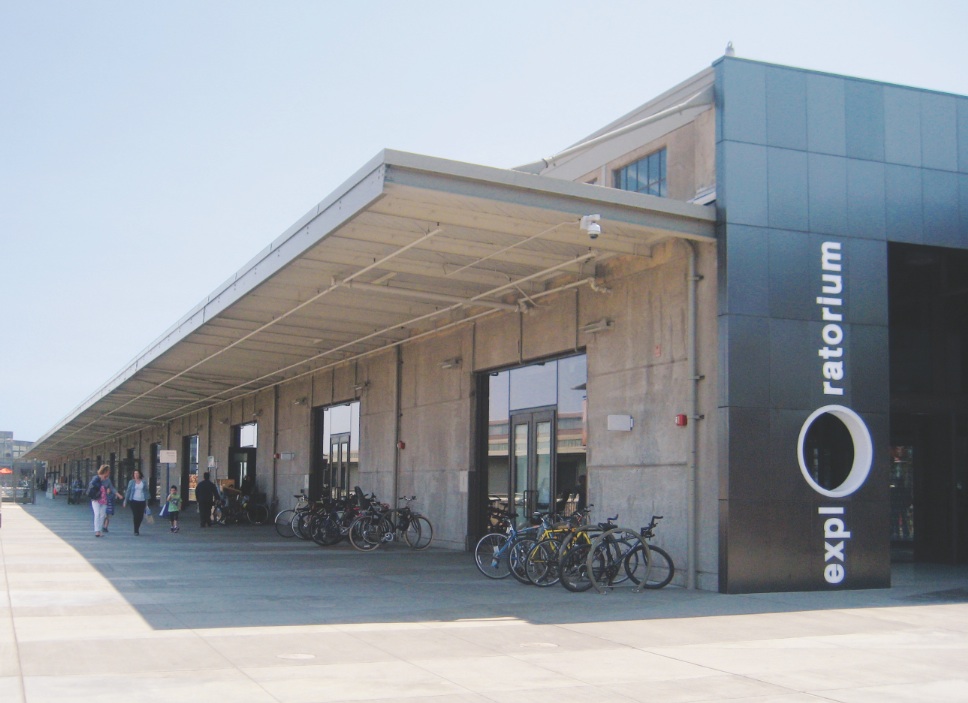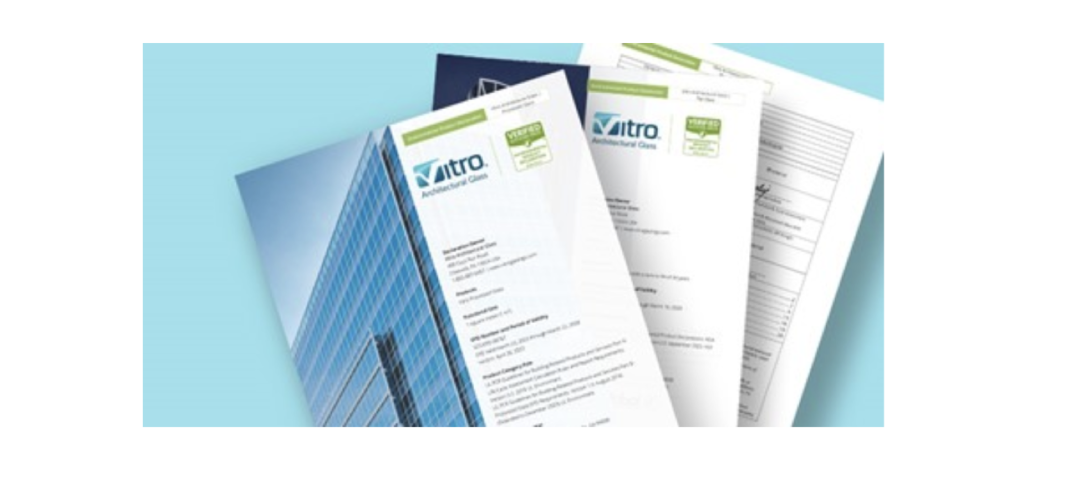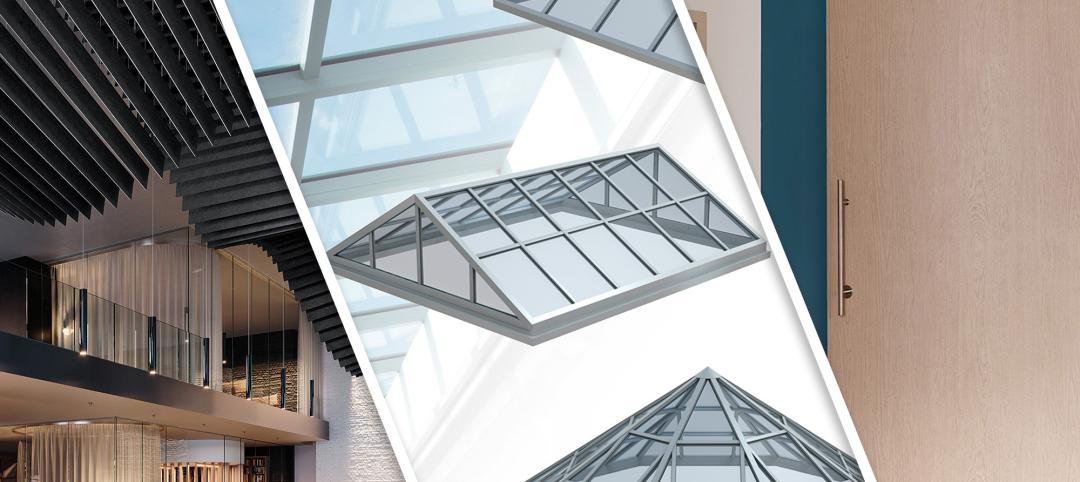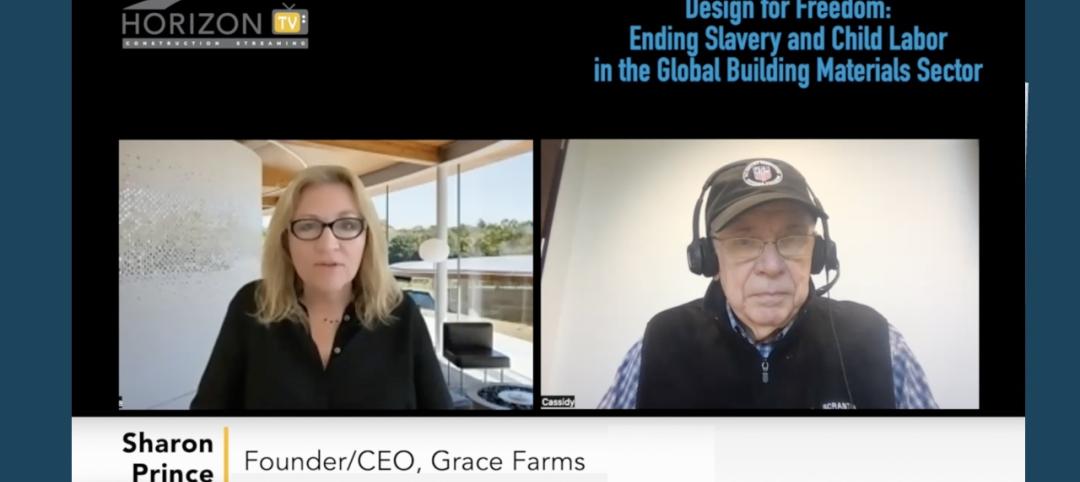Editor's note: This is a sponsored article. All text and images were provided by the sponsor company.
Project name: The Exploratorium in San Francisco
Architect: EHDD
General Contractor: Nibbi Brothers General Contractors
Glazing Contractor: Architectural Glass and Aluminum
Products used: SuperLite II-XL 45 IGU in SAFTIfire HM Framing
The newly-opened Exploratorium has brought energy and excitement to the city’s bustling waterfront. EHDD transformed the historic Pier 15, built in 1915, to a 330,000 square foot indoor and outdoor campus, being touted as the largest net-zero building in the city and potentially the largest net-zero museum in the world.
EHDD kept the original structure and concrete cladding of the building but removed most of the loading dock doors on the north and south sides of the pier, replacing them with glazed door assemblies in order to bring in natural light and provide convenient access between the inside space and the outdoor exhibits. By using glass, the architects were also able to make a connection to the outdoors, with the south side offering views of the Bay Bridge and north side offering views of the San Francisco skyline – putting the city itself and its iconic landmarks on display.
However, the location of the Exploratorium’s new home posed a unique challenge. “The exterior portions of the piers are designed to function similar to rated interior egress corridors in the event of a fire,” says Katherine Miller, the project architect for the Exploratorium. Not wanting to sacrifice daylight and views, the designers opted to use fire rated glass for the exterior doors so that people evacuating the site via the piers will be protected in case a fire breaks out from inside the building.
SAFTI FIRST supplied a total of 19 pairs of 45-minute steel doors – 11 pairs on north side and 8 pairs on the south side – using SuperLite II-XL 45 IGU in SAFTIfire HM Framing. The SuperLite II-XL 45 glazing was insulated with tempered low-e glazing on the #2 surface for energy efficiency. The frames were painted to match the adjacent non-rated systems.
8 pairs of SuperLite II-XL 45 IGU in HM Door Framing on the south side provides easy access to the outdoor exhibits and views of the Bay Bridge.
SuperLite II-XL 45 is a clear, fire resistive glazing product tested to ASTM E-119/NFPA 251/UL 263 with hose stream and meets NFPA 252/257 for use in door and window assemblies. It meets CPSC Cat. II impact safety and is available in large sizes, which was critical because some of the doors had a day light opening of 97 inches high.
“SAFTI FIRST was able to achieve the desired glass heights, and was less expensive than other options,” adds Katherine. SuperLite II-XL 45 has the largest sizes for clear 45 minute fire and safety rated glazing, with a maximum clear view area of 4,952 square inches and a maximum clear view height or width 124 inches. It is made here in the USA at SAFTI FIRST’s manufacturing facility in California, ensuring competitive pricing versus fire resistive multilaminates or fire protective filmed or laminated ceramics, which are either imported from Europe of Asia.
Aside from large sizes and competitive pricing, SuperLite II-XL 45 was chosen because “it was a good color match to the adjacent clear low-e coated glass,” says Katherine. SuperLite II-XL 45 has superior optical clarity and does not have any amber tints typically seen in fire rated ceramics.
Further expansion is planned for the neighboring Pier 17. For now, inquisitive minds of any age can satisfy their curiosities at the Exploratorium’s new spectacular – and safe – space along the embarcadero.
Related Stories
75 Top Building Products | Dec 13, 2023
75 top building products for 2023
From a bladeless rooftop wind energy system, to a troffer light fixture with built-in continuous visible light disinfection, innovation is plentiful in Building Design+Construction's annual 75 Top Products report.
Glass and Glazing | Aug 25, 2023
Vitro Architectural Glass Lowers Embodied Carbon Further, Releases NEW Environmental Product Declarations
Vitro Architectural Glass (formerly PPG Glass) has published updated versions of its Environmental Product Declarations (EPDs) for both flat and processed glass. These updates reaffirm that Vitro’s glass products contain less embodied carbon than the industry standard for architectural glass products and indicate a lower embodied carbon value than previously reported in 2017 editions of these EPDs.
Fire-Rated Products | Aug 14, 2023
Free download: Fire-rated glazing 101 technical guide from the National Glass Association
The National Glass Association (NGA) is pleased to announce the publication of a new technical resource, Fire-Rated Glazing 101. This five-page document addresses how to incorporate fire-rated glazing systems in a manner that not only provides protection to building occupants from fire, but also considers other design goals, such as daylight, privacy and security.
75 Top Building Products | Aug 7, 2023
Enter today! BD+C's 75 Top Building Products for 2023
BD+C editors are now accepting submissions for the annual 75 Top Building Products awards. The winners will be featured in the November/December 2023 issue of Building Design+Construction.
Products and Materials | Jul 31, 2023
Top building products for July 2023
BD+C Editors break down 15 of the top building products this month, from cleanroom doors to window storm protection systems.
Sponsored | Building Enclosure Systems | May 16, 2023
4 steps to a better building enclosure
Dividing the outside environment from the interior, the building enclosure is one of the most important parts of the structure. The enclosure not only defines the building’s aesthetic, but also protects occupants from the elements and facilitates a comfortable, controlled climate. With dozens of components comprising the exterior assemblies, from foundation to cladding to roof, figuring out which concerns to address first can be daunting.
Codes | Mar 2, 2023
Biden Administration’s proposed building materials rules increase domestic requirements
The Biden Administration’s proposal on building materials rules used on federal construction and federally funded state and local buildings would significantly boost the made-in-America mandate. In the past, products could qualify as domestically made if at least 55% of the value of their components were from the U.S.
AEC Innovators | Feb 28, 2023
Meet the 'urban miner' who is rethinking how we deconstruct and reuse buildings
New Horizon Urban Mining, a demolition firm in the Netherlands, has hitched its business model to construction materials recycling. It's plan: deconstruct buildings and infrastructure and sell the building products for reuse in new construction. New Horizon and its Founder Michel Baars have been named 2023 AEC Innovators by Building Design+Construction editors.
75 Top Building Products | Nov 30, 2022
75 top building products for 2022
Each year, the Building Design+Construction editorial team evaluates the vast universe of new and updated products, materials, and systems for the U.S. building design and construction market. The best-of-the-best products make up our annual 75 Top Products report.
Building Materials | Nov 2, 2022
Design for Freedom: Ending slavery and child labor in the global building materials sector
Sharon Prince, Founder and CEO of Grace Farms and Design for Freedom, discusses DFF's report on slavery and enforced child labor in building products and materials.


















